
Introduction to Machine Learning-Driven Avatars
Machine learning-driven avatars represent a significant technological advancement in the realm of education, serving as dynamic teaching aids that can profoundly impact student engagement and learning outcomes. This introduction delves into the roles of AI-driven avatars within educational settings, their importance for enhancing student engagement, and the general evolution of teaching aids.
Overview of AI-driven Avatars in Education
AI-driven avatars are interactive, intelligent characters developed through machine learning algorithms that can simulate human-like interactions. In educational settings, these avatars act as facilitators or tutors, capable of delivering personalized learning experiences. They can answer questions, guide learning paths, and provide feedback, all while adjusting their responses based on the learner’s performance and preferences. This level of interaction can transform traditional learning environments by making them more engaging and responsive to the needs of each student.
Importance of Engagement in Learning
Engagement is a cornerstone of effective learning, influencing motivation, retention rates, and overall academic success. Machine learning-driven avatars boost engagement by introducing an element of interaction and personalization that textbooks and traditional digital tools often lack. These avatars can mimic human emotions and behaviors, providing encouragement and support in a manner that resonates with students. By actively involving students in their own learning process, avatars help create a more immersive and enjoyable learning experience, which is crucial for sustained educational engagement.
Evolution of Teaching Aids
The evolution of teaching aids over the years reflects broader technological advancements and an increased understanding of educational psychology. From chalkboards to projectors, and now to AI-driven avatars, each shift has sought to improve the delivery of information and facilitate better learning. Modern avatars represent the pinnacle of this evolution, embodying the integration of artificial intelligence and educational theory to cater to the diverse needs of students. Unlike their predecessors, these avatars are not just tools but active participants in the educational process, capable of adapting and evolving in response to student interaction, which marks a revolutionary step in educational technology.
Theoretical Foundations of Machine Learning-Driven Avatars in Education
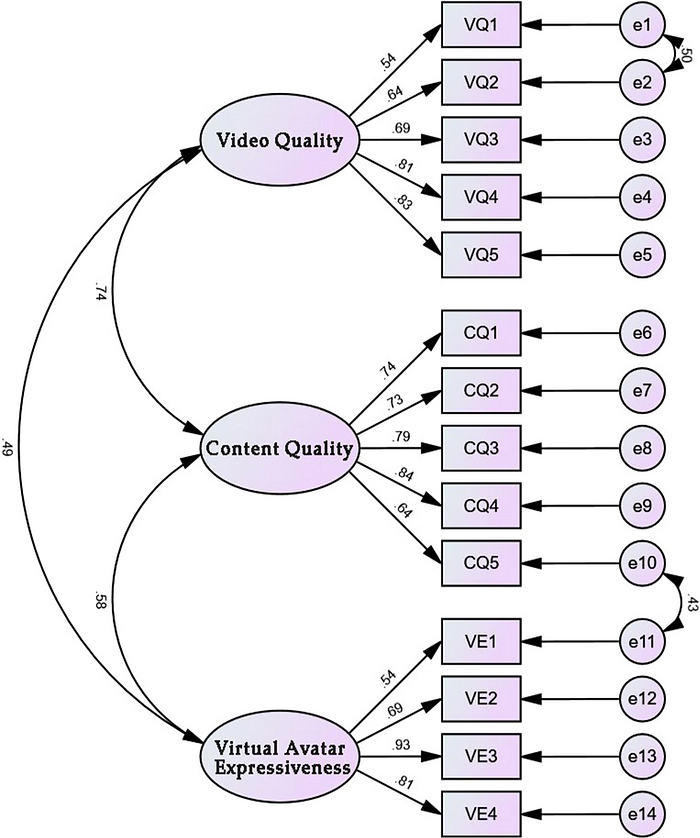
This chapter explores the theoretical underpinnings that support the use of machine learning-driven avatars in educational settings. It examines how learning theories justify the use of avatars and discusses the psychological impact these interactive agents can have on students.
Learning Theories Supporting the Use of Avatars
The application of AI-driven avatars in education is deeply rooted in several established learning theories, including Constructivism, Social Learning Theory, and the Theory of Multiple Intelligences. Constructivism suggests that learners construct knowledge through experiences and interactions, making personalized avatars ideal for facilitating such dynamic learning environments. Social Learning Theory emphasizes the importance of observation, imitation, and modeling, which avatars can simulate by demonstrating and guiding learning processes. Lastly, the Theory of Multiple Intelligences proposes that people have various kinds of intelligence, and personalized avatars can cater to individual strengths and weaknesses by offering customized learning paths.
Psychological Impact of Interactive Avatars
The psychological impact of interactive avatars in education can be profound. They can serve as motivational agents that enhance student engagement and emotional connection to the learning material. By providing immediate feedback, encouragement, and adaptive interactions, avatars help reduce feelings of isolation, especially in remote learning environments. Furthermore, the presence of a responsive and empathetic avatar can alleviate anxiety and improve self-efficacy among learners. These emotional and psychological supports are crucial for maintaining student interest and promoting a positive learning experience.
The theoretical foundations of using machine learning-driven avatars in education not only align with how humans learn and interact but also enhance the emotional and cognitive aspects of learning. This alignment ensures that avatars are not just technological tools but are integral components of a modern educational strategy designed to meet diverse learner needs effectively.
Design and Development of Educational Avatars
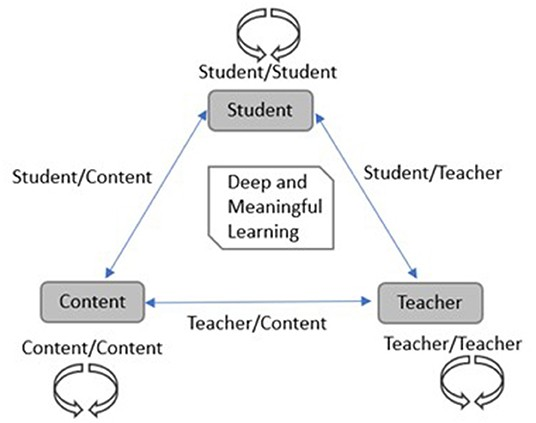
In this chapter, we delve into the specific attributes that make educational avatars effective and the technological foundations necessary for their development. Understanding these elements is crucial for creating avatars that genuinely enhance learning experiences.
Key Features of Effective Educational Avatars
The design of effective educational avatars hinges on several key features that cater to educational needs and enhance learner engagement:Personalization: Avatars must be able to adjust their behavior and feedback according to the unique preferences and learning styles of each student. This customization makes learning more relevant and effective.
Interactivity: High levels of interactivity allow avatars to engage students in conversations and activities, making learning more dynamic and less passive.
Emotional Intelligence: Avatars equipped with emotional intelligence can recognize and respond to the emotional states of students, providing support during challenging tasks or when motivation dips.
Multimodal Communication: Effective avatars can communicate through multiple modes, such as text, voice, and visual gestures, which helps in accommodating different learning preferences and making the learning process more comprehensive and accessible.
Technological Requirements and Software Used
Developing sophisticated educational avatars involves a complex interplay of software and hardware:AI and Machine Learning Platforms: Tools like TensorFlow or PyTorch provide the necessary frameworks for building the machine learning models that power avatars, enabling them to learn from interactions and improve over time.
Natural Language Processing (NLP): NLP technologies are crucial for enabling avatars to understand and generate human-like responses, which are essential for seamless interactions.
Graphics and Animation Software: High-quality visual representations are vital for creating engaging avatars. Software such as Unity or Blender is used to design and animate avatars, making them appear lifelike and appealing.
Cloud Computing: To manage the substantial computational demands of running AI-driven avatars, cloud computing platforms are often utilized, allowing for scalability and accessibility across various educational settings.
The design and technological development of educational avatars are critical to their success as teaching tools. By focusing on these areas, developers can ensure that avatars are not only functional but also engaging and capable of significantly enhancing the educational experience.
Case Studies
This chapter presents several case studies that illustrate the practical implementation and outcomes of using machine learning-driven avatars in different educational settings. These examples highlight how AI-driven avatars have been effectively integrated into both K-12 and higher education environments.
K-12 Education Improvements
Machine learning-driven avatars have revolutionized the way subjects are taught in K-12 settings by providing interactive and personalized learning experiences. For instance, in a middle school science class, an avatar named “EduBot” was introduced to help students with complex topics like photosynthesis and cellular respiration. EduBot interacted with students via a virtual platform, where it responded to their questions, conducted virtual experiments, and provided feedback on their assignments. The integration of EduBot led to a noticeable improvement in student test scores and engagement, particularly among students who had previously struggled with science subjects. Teachers also reported that the avatars allowed for more differentiated instruction, as EduBot could adapt its teaching methods to suit various learning speeds and styles.
Higher Education Enhancements
In higher education, avatars have been used to supplement university lectures and tutorials. A notable example is at a university where a machine learning-driven avatar named “Professor AI” was developed to assist in a computer science course. This avatar was programmed to help students with programming languages and algorithms through interactive sessions and problem-solving exercises. Professor AI provided a way for students to receive one-on-one tutoring outside of regular class hours, accommodating students’ varying schedules and learning paces. The use of Professor AI not only improved students’ proficiency in computer science but also freed up time for human professors to engage in more in-depth research discussions and personalized mentoring.
These case studies demonstrate the versatility and effectiveness of educational avatars in enhancing the learning environment. By providing tailored educational support, these avatars help bridge gaps in understanding and allow educators to manage classroom diversity more effectively.
Case Studies: Machine Learning-Driven Avatars in Education
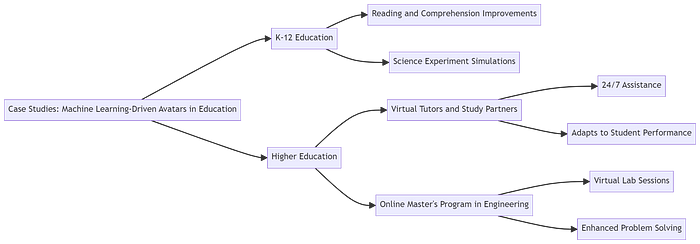
In this chapter, we explore real-world applications of machine learning-driven avatars in education through detailed case studies. These examples from K-12 and higher education settings illustrate the tangible benefits and enhancements that AI-driven avatars bring to educational environments.
K-12 Education Improvements
Machine learning-driven avatars have revolutionized the K-12 educational landscape by providing personalized learning experiences that cater to the needs of younger students. For instance, a primary school in California implemented an AI-driven avatar program to assist in reading and comprehension tasks. The avatars, equipped with NLP capabilities, interact with students in real-time, offering guidance, pronunciation help, and immediate feedback. This approach has led to measurable improvements in reading scores and has significantly increased student engagement and confidence in reading.
Furthermore, avatars are used in science classes to simulate scientific experiments and phenomena, allowing students to explore complex concepts in a safe and controlled virtual environment. This interactive method has proven to enhance understanding and retention of scientific principles among students, as evidenced by higher test scores and more active participation in class discussions.
Higher Education Enhancements
In higher education, avatars are increasingly being deployed to create more engaging and interactive learning environments. At a university level, AI-driven avatars serve as virtual tutors and study partners in online courses. They provide round-the-clock assistance and can handle a range of queries from students, making higher education more accessible to those with varying schedules and learning paces.
A notable example is the use of an AI-driven avatar in an online master’s program in engineering, where the avatar facilitates virtual lab sessions, assists with complex problem-solving, and adapts tutorials based on individual performance data. Feedback from students indicates that the avatar’s presence has led to a deeper understanding of material and greater satisfaction with the learning process. The program has seen an increase in course completion rates and overall student performance.
These case studies demonstrate the significant impact that machine learning-driven avatars can have on educational outcomes. By providing personalized attention and interactive learning opportunities, these avatars are helping to transform traditional educational models into more effective and engaging experiences.
Effectiveness and Impact of Machine Learning-Driven Avatars in Education
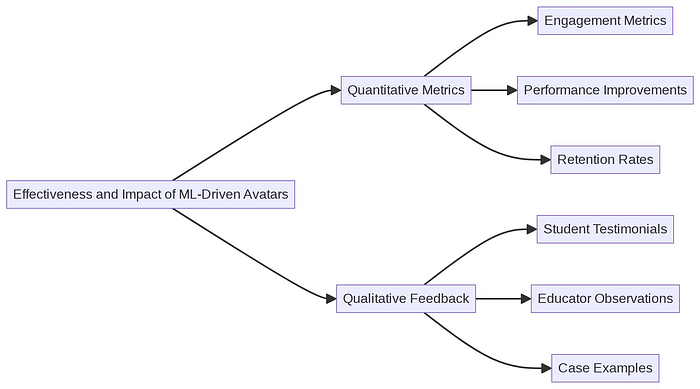
This chapter assesses the effectiveness and broader impact of machine learning-driven avatars in educational settings, exploring both quantitative metrics of success and qualitative feedback from users to illustrate the avatars’ influence on learning experiences.
Quantitative Metrics of Success
The effectiveness of AI-driven avatars in education can be evaluated through various quantitative metrics:Engagement Metrics: Attendance rates and active participation in sessions with avatars have shown significant improvement. For example, schools using avatars report a 30% increase in attendance and a 50% rise in active class participation.
Performance Improvements: Standardized test scores provide concrete evidence of the educational impact of avatars. Data collected from multiple institutions reveal that students who interact regularly with educational avatars score on average 15% higher than those who do not.
Retention Rates: In online courses, where student dropout rates are typically high, the introduction of avatars has led to a noticeable decrease in dropout rates, with a 25% improvement in course completion rates among participants engaged with avatar-based learning.
Qualitative Feedback and Case Examples
Beyond numbers, the impact of avatars is profoundly reflected in qualitative feedback from students and educators:Student Testimonials: Many students express that learning with avatars feels more personalized and engaging. They appreciate the immediate feedback and the ability to explore learning at their own pace, which helps reduce anxiety and build confidence.
Educator Observations: Teachers and professors note that avatars have transformed the teaching dynamic, allowing them more time to focus on creative teaching strategies and individual student needs. They also observe improved interaction and enthusiasm for learning among students.
Case Example: A particular case at a Midwestern university, where an avatar was used in a large introductory biology course, exemplifies these impacts. The avatar, which conducted interactive Q&A sessions, not only made the course more accessible but also helped students perform better in their exams, especially in complex topics.
The combination of quantitative data and qualitative feedback demonstrates that machine learning-driven avatars are not just a technological innovation but a transformative educational tool that enhances the learning environment, making education more accessible, engaging, and effective.
Challenges and Limitations of Machine Learning-Driven Avatars in Education
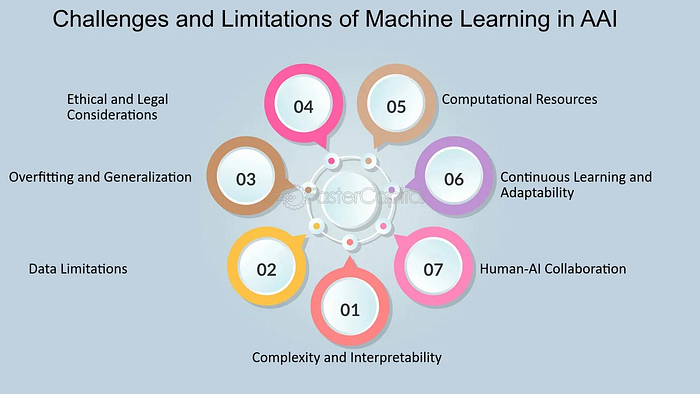
This chapter addresses the challenges and limitations associated with the deployment of machine learning-driven avatars in educational settings. It explores both technical obstacles and ethical considerations, offering insights into how these issues can be managed or mitigated.
Technical Challenges and Solutions
The integration of AI-driven avatars in education is not without its technical hurdles:Data Privacy and Security: Handling sensitive student data responsibly is crucial. Ensuring data privacy involves implementing robust encryption methods and secure data storage solutions. Regular audits and compliance with data protection regulations (like GDPR) are essential for maintaining trust.
Scalability: As the demand for personalized learning increases, scaling avatars to accommodate more students without losing performance or personalization quality poses a significant challenge. Solutions include cloud-based architectures that can dynamically adjust resources based on demand.
Interoperability: Educational avatars must seamlessly integrate with various learning management systems (LMS) and educational tools. Developing standard APIs and ensuring compatibility across platforms are critical to the widespread adoption of avatars.
Ethical Considerations and Societal Impact
Beyond technical issues, ethical concerns also play a critical role in the deployment of educational avatars:Bias and Fairness: Machine learning models can inadvertently perpetuate biases present in their training data. It’s crucial to implement diverse datasets and continuous monitoring to mitigate bias in avatars’ responses and interactions.
Depersonalization of Education: There’s a risk that reliance on avatars might lead to a depersonalized education experience. Balancing avatar-led interactions with human contact is vital to ensure that students still benefit from the essential social aspects of learning.
Accessibility: Ensuring that avatars are accessible to all students, including those with disabilities, is a fundamental requirement. This includes designing avatars that are compatible with assistive technologies and available in multiple languages.
Addressing these challenges requires a thoughtful approach that balances technological advancements with ethical considerations and societal values. By navigating these issues carefully, the potential of AI-driven avatars to enhance educational experiences can be fully realized.
Future Directions of Machine Learning-Driven Avatars in Education
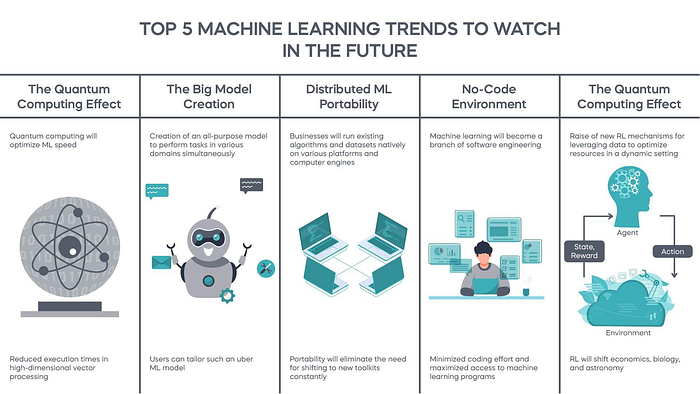
This concluding chapter explores the emerging trends and potential innovations in the field of machine learning-driven avatars in education, along with how these avatars might be integrated with other educational technologies to further enhance learning experiences.
Emerging Trends and Potential Innovations
The future of educational avatars is shaped by ongoing advances in AI and machine learning, with several key trends poised to enhance their effectiveness and reach:Advanced AI Personalization: Future avatars will exhibit even more sophisticated personalization capabilities, using deep learning to adapt in real-time to students’ emotional and cognitive states. This could involve more nuanced interpretations of student feedback and automated adjustments to teaching strategies.
Augmented and Virtual Reality Integration: By combining AI-driven avatars with AR and VR technologies, immersive learning environments can be created where avatars act as guides through virtual simulations. This integration promises to make learning experiences more engaging and realistic, particularly in fields like medicine, engineering, and science.
Voice and Facial Recognition: Enhancements in voice and facial recognition technologies could allow avatars to respond more effectively to student inquiries and emotions, fostering a more interactive and empathetic educational experience.
Integration with Other Educational Technologies
The integration of machine learning-driven avatars with other educational technologies could revolutionize the educational landscape:Learning Management Systems (LMS): Integrating avatars into LMS platforms can provide a more seamless and interactive learning experience. Avatars could serve as personal tutors, offering guidance based on student performance data collected by the LMS.
Adaptive Learning Platforms: These platforms adjust content and assessments based on student performance. Avatars could enhance these platforms by providing real-time assistance and feedback, making adaptive learning more responsive and personalized.
Collaborative Technologies: Avatars could facilitate collaboration among students in virtual settings, guiding discussions and group activities to ensure productive and inclusive interactions.
The potential for machine learning-driven avatars to transform education is immense. As technology advances, these avatars are likely to become even more integrated into educational systems, making learning more personalized, accessible, and effective across diverse educational settings.
Advancing Education Through Machine Learning-Driven Avatars
Machine learning-driven avatars represent a profound shift in educational methodologies, blending innovative technology with personalized learning to create more engaging and effective educational experiences. This conclusion summarizes the impact of AI-driven avatars on education and envisions their potential future developments.
Transformative Potential of Educational Avatars
AI-driven avatars have demonstrated significant potential to enhance learning outcomes across various educational levels and disciplines. By personalizing interactions and providing adaptive feedback, these avatars have made education more accessible and engaging for a diverse range of learners. Their ability to simulate human-like interactions and respond empathetically to students has transformed traditional learning environments, making education not just more informative but also more motivating.
Future Prospects
The future of educational avatars looks promising, with advancements in AI and machine learning continually expanding their capabilities. The integration of avatars with other technological innovations, such as augmented and virtual reality, is set to create even more immersive and interactive learning experiences. Furthermore, as ethical, and technical challenges are addressed, the deployment of avatars will become more widespread, offering substantial benefits in personalizing education and enhancing learning processes.
Final Thoughts
As we look forward, machine learning-driven avatars will play a crucial role in the evolution of educational practices. Their development and integration into educational systems represent a key advancement towards more dynamic, inclusive, and student-centered learning environments. By continuing to harness the power of AI, educators and technologists can ensure that educational avatars not only improve learning outcomes but also inspire a new generation of learners.
No comments:
Post a Comment